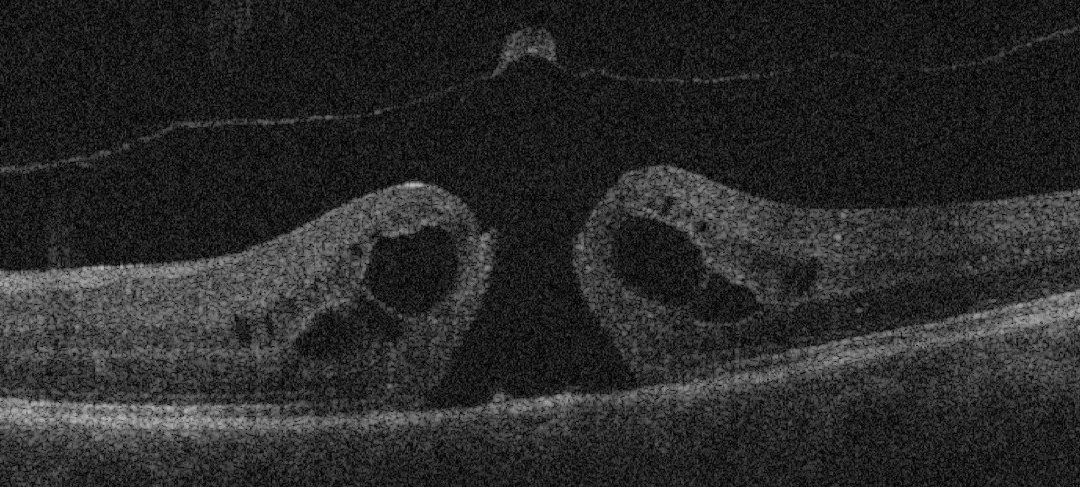What are the symptoms of a macular hole?
The macula is a critical portion of the retina responsible for our central vision and fine focus. We use the macula to read, look at our iPhones, and recognize familiar faces. Rarely, a hole can develop directly in the macula, which immediately causes a blind spot in the central vision. Patients who develop a macular hole can suddenly experience a decrease in their central visual acuity. Other times, the symptoms of blurred, wavy, or distorted vision can occur more slowly. Macular holes sometimes are accompanied by eye floaters. Macular holes are sometimes diagnosed on routine eye exams when the fellow “good” eye is covered during vision testing at the eye doctor.
How is a macular hole diagnosed?
Macular holes typically occur later in life and happen more often in women. They occur about 5-10% of the time in both eyes, but usually not at the same time. General ophthalmologists and retinal specialists use clinical examination in the eye clinic to diagnose macular holes. Optical coherence tomography (OCT) testing is a new technology at the retina specialist’s office which can help determine the size of the macular hole as well as reveal any areas of tension on the edges of the macular hole. This helps to determine the stage of the hole, which is important. The stage of the macular hole influences which cases may benefit from vitrectomy surgery.
How can my macular hole be fixed?
It is amazing to think that macular holes were considered untreatable until as recently as 1991! Now, retina specialists perform vitrectomy, membrane peeling, and introduce intraocular gas to fix macular holes with great success. A vitrectomy removes the vitreous jelly from the back part of the eye and replaces it with a clear solution. This step removes the pulling forces from the edge of the hole. Surgeons then peel the inner-most lining of the retina around the edges of the hole to remove any additional tension around the edges of the hole. Intraocular gas is then used to fill the eye to act as a “bridge” to allow the retina to heal and close the gap from the macular hole. The gas will dissolve naturally over a period of time as the eye fills with a clear fluid that is naturally made by your eye. Success rates after vitrectomy are very high and range from 85-95% depending on pre-operative factors such as the size of the macular hole and the length of time prior to vitrectomy surgery. After surgery, some retinal specialists recommend a period of face-down positioning depending on their practice pattern and the characteristics of the macular hole. This is an important question to discuss with your retinal specialist.
If you think you are experiencing symptoms of a macular hole, call today – 941-777-5000.

